Poland map
Where is Poland located? Basic information about the country

https://www.schengenvisainfo.com
The Republic of Poland is a presidential-parliamentary republic located in Central Europe. It covers about 312,679 km² and ranks 69th in the world in terms of territory. An economically developed country. On the north side it is washed by way of the Baltic Sea.
Poland has land borders with Russia, Lithuania, Belarus, Ukraine, Slovakia, the Czech Republic and Germany. In addition, Poland borders Denmark and Sweden via the financial region in the Baltic Sea.
Poland is inhabited by 36,623,221 people (124 per km) and ranks 38 in the world in terms of population.
The records of the Polish kingdom go back many centuries. The opening of statehood was once laid in the center of the tenth century. Until the end of the 18th century, the Kingdom of Poland was independent, then its territory was divided between numerous states, and solely in the 19th century commenced the restoration of independence and the return of ethnic lands.
Time zone: UTC +1
Coordinates: 52°N, 20°″E
Regions of the country
Poland is divided into 16 ‘voivodeships’, voivodeships are further subdivided into ‘powiats’, and powiats are subdivided into ‘gminas’.
Voivodeships in Poland are the largest administrative units, they include:
• Lower Silesian, includes the Silesian lowland and the Sudetenland, the capital of the voivodeship Wroclaw. As cities with powiat rights, there are: Legnica, Wroclaw, Jelenia Góra, Walbrzych;
• Kuyavian-Pomeranian, includes the Wielkopolska Lake District, part of the Pomeranian Lake District and Kuyavy. Towns with poviat rights: Toruń, Bydgoszcz and Grudziądz Włocławek;
• Lublin, capital Lublin. Towns with poviat rights: Zamon, Lublin, Chełm, Biała Podlaska.
• Lubuskie, western regions of Poland, in the valleys of the Polish rivers Odra and Warta. The capital is Gorzow Wielkopolski. Towns with poviat rights: Zielona Góra and Gorzów Wielkopolski.
• Łódź, the capital is Łódź. Towns with powiat rights: Lodz, Skierniewice, Piotrkow Trybunalski;
• Lesser Poland, the capital of the province of Krakow. Towns with poviat rights: Tarnow, Nowy Sącz, Krakow, includes the Vistula river basin, Podhale and the Carpathians.
• Mazowieckie, Mazowieckie lowland, capital Warsaw. Towns with poviat rights: Radom, Siedlce, Plock and Ostroleka;
• Opole, the capital is Opole. Cities with poviat rights: Opole; includes part of the Sudetenland and the Silesian Highlands. Subcarpathian – Low Beskids, Sandomierz depression, Carpathians, capital – Rzeszow. Towns with powiat rights: Krosno, Tarnobrzeg, Przemysl, Rzeszów;
• Podlaskie, capital Bialystok. Towns with poviat rights: Suwalki, Lomza, Bialystok; includes the Suwalski Lake District, the Podlaskie Lowland. It is characterized by large forests – Bushezhskaya, Augustovskaya, Kashinskaya;
• Pomeranian, capital Gdansk. Towns with poviat rights: Gdansk, Gdynia, Sopot and Slupsk, includes the coastal belt of the Baltic Sea.
• Silesian. Towns with powiat rights: Katowice, Bielsko-Biala, Bytom, Chorzow, Częstochowa, Dąbrowa-Gornicza, Gliwice, Jastrzebie, Jaworzno, Mislowice, Ruda Slesska, Pekaven Zovieszowice-Slavowicz.
• Świętokrzyskie, the capital of Kielce. These include the Sandomierz Upland, the Świętokrzyskie Mountains and the Nida Basin.
• Warmian-Masurian, capital Olsztyn. Towns with poviat rights: Elbląg and Olsztyn, covers the Masurian Lake District, Chelminsko-Dobzhinski Lake District up to Zulawy;
• Greater Poland, the capital of Poznan. Towns with poviat rights: Konin, Poznań, Leszno and Kalisz cover the western part of the Polish Lowland.
• West Pomeranian, the capital of Szczecin, covers the coast and the southern part of the Pomeranian Lake District. Towns with poviat rights: Koszalin, Szczecin and Swinoujscie, 17 districts were allocated.
Powiats are medium-sized administrative-territorial units in the Republic of Poland.
The most interesting sights of Poland
Castle Square in Warsaw
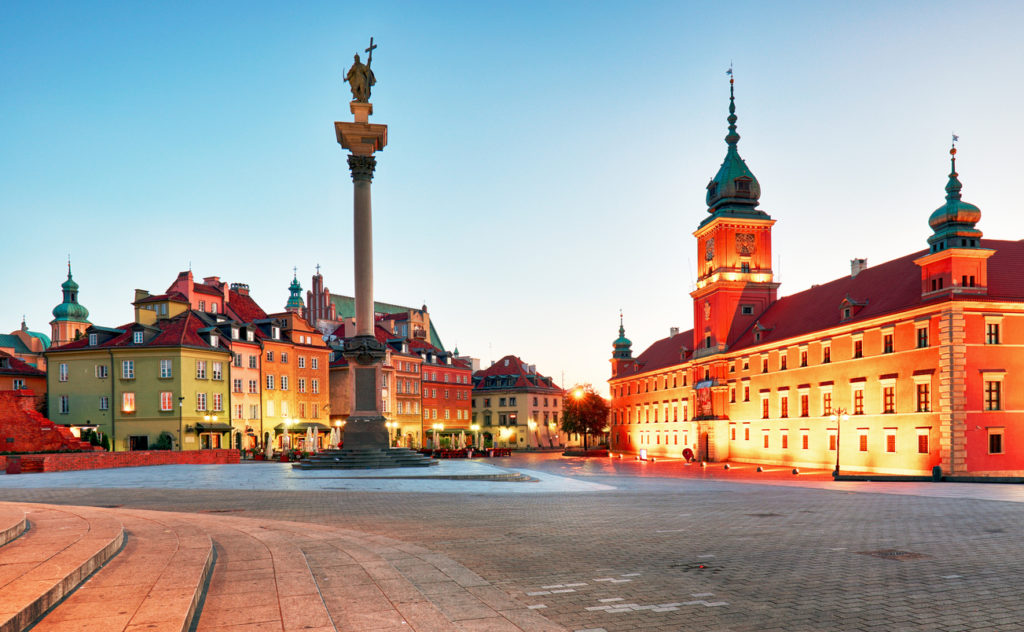
https://www.purevacations.com
Since ancient times, this place has been the social and cultural center of the Polish capital, it is from here that acquaintance with the old city begins. The main symbol of the square is the monument to Sigismund, erected in the 17th century. The monument is a massive granite column, on which rises a bronze sculpture of the Polish king and the great Lithuanian prince Sigismund 3, who holds a saber in one hand and a cross in the other. On the entire eastern side of the square is the Royal Castle, which, for a long time, served as the official residence of the Polish monarchs.
Location: 01-195 Warszawa, Poland
Coordinates: 52°14′51″N, 21°00′49″E
Royal Castle in Warsaw
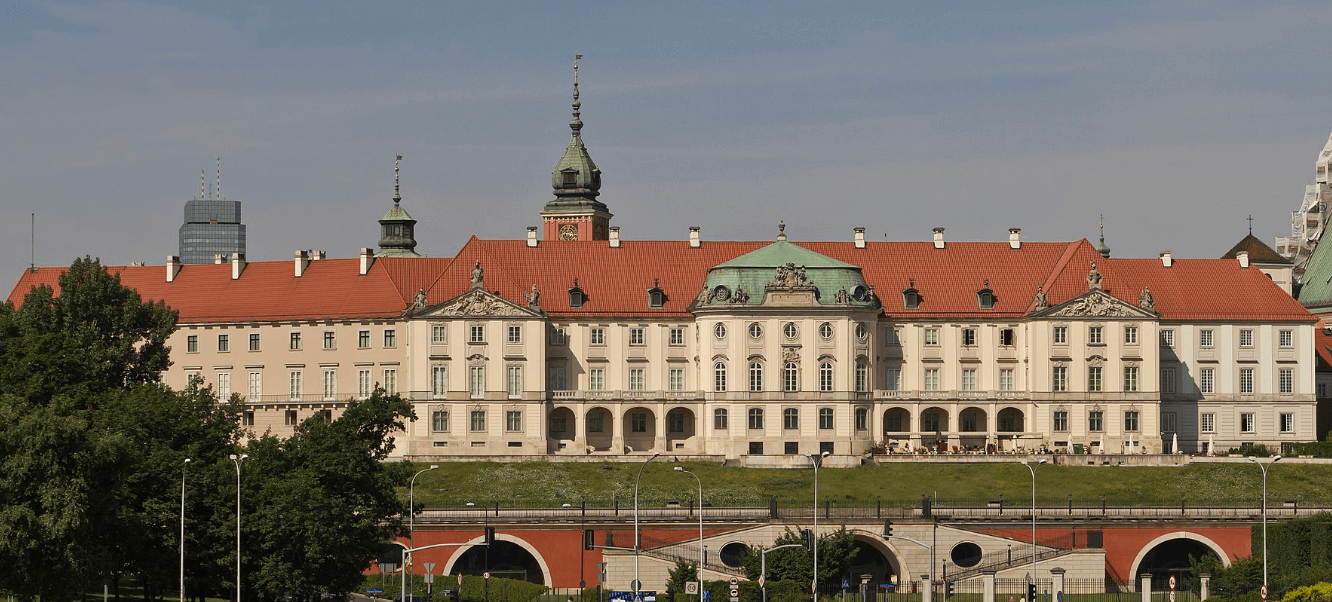
https://blogpatrickgermain.blogspot.com
One of the most famous sights in Poland is the Royal Castle, which was built in the early 17th century. For a long time, the castle served as the residence of kings and the meeting place of the Sejm. According to an old tradition, a trumpeter's signal is heard from the main tower of the castle (the 60-meter Sigismund's Tower), every day at 11:15. Nowadays, the building of the Royal Castle houses a museum.
The Great Hall, the Marble Room, the Palace Chapel, the Royal Bedchamber, the Knights' Hall and the Throne Hall are very popular among its visitors. In the galleries of the museum you will see a rich collection of paintings, which includes paintings by Rembrandt and Canaletto, and official receptions and state meetings are held in the spacious halls of the castle.
Location: plac Zamkowy 4, 00-277 Warszawa, Poland
Coordinates: 52°14′52″N, 21°00′51″E
Malbork

https://en.wikipedia.org
The magnificent medieval castle of Malbork is known as the largest Gothic architectural complex in the world. Located in the northern part of Poland. Since the 13th century, the castle has served as the residence of the Grand Master of the Teutonic Order. In the 15th century, Malbork turned into a powerful defensive structure of the Crusader Knights, and then became one of the residences of the Polish kings. The huge castle complex housed halls for receiving guests, monastic cells, offices for officials, stables, workshops, bakeries and other buildings. Nowadays, a museum dedicated to the history of Malbork Castle is open for tourists. The concerts of ancient music and knightly feasts, which are traditionally organized in the main halls of the castle, make a great impression. Every year in the middle of summer, a grandiose historical reconstruction called the Siege of Malbork takes place near the castle walls. This is one of the must-see places in Poland.
Location: Starościńska 1, 82-200 Malbork, Poland
Coordinates: 54°02′23″N, 19°01′40″E
Major airports in Poland
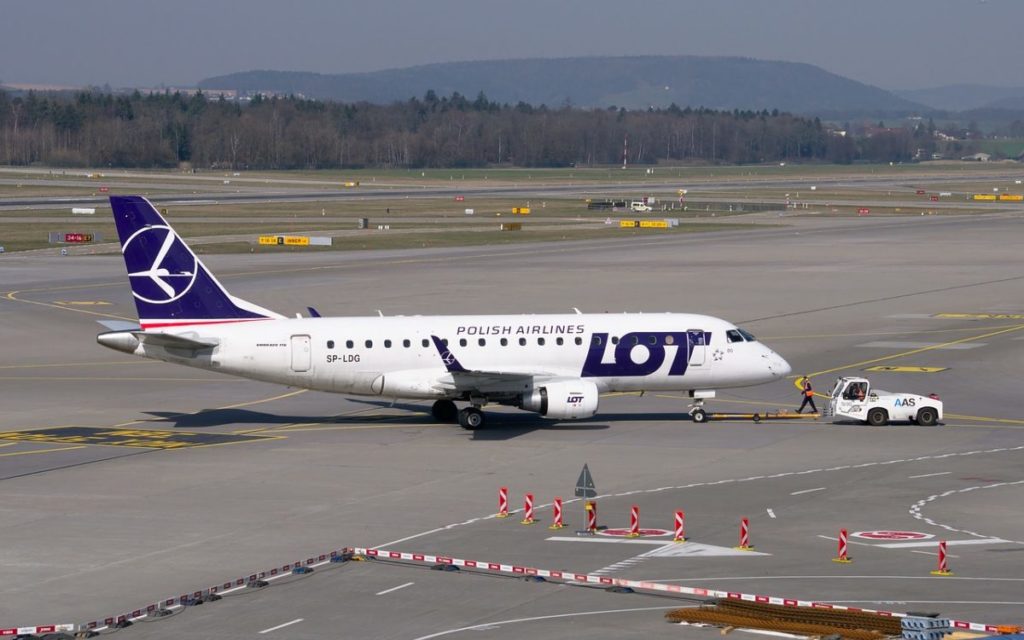
https://checkinprice.com
- Four state airlines (sprint Air, LOT Polish Airlines, LOТ Charters, enter air)
- 73 international lines
- 9 internal lines
- Passenger traffic over 40 million people per year
- 15 airports in 14 cities\
|
|
|
|
|
|
|
|
|
|
|
|
Major train stations in Poland
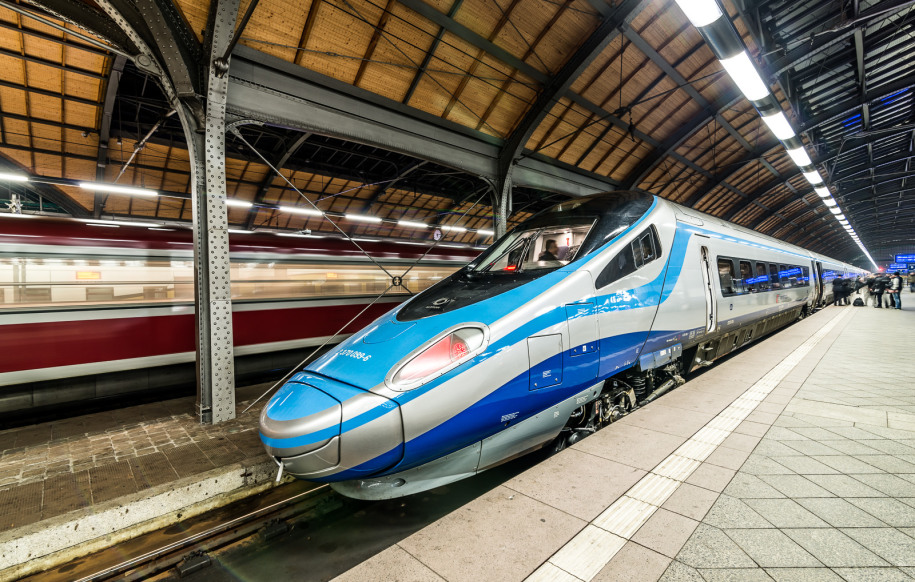
https://jonworth.eu
A satisfying and exceedingly cheaper way to tour in Poland is by means of train. Most Poles and foreigners who are in the country choose to journey in this way. Residents of neighboring international locations – Germany, France, Ukraine, Vienna, Croatia, Austria, Slovakia – additionally come to this or other city of the republic by way of train. The size of the railway is 26644 km.
If we compare a train with a bus or an airplane, then the advantage will definitely be on the side of the railways. The cost of a train ticket includes large and oversized luggage, for which you will have to pay extra on the plane. There are also sockets, Wi-Fi, and tables on the trains.
|
|
|
|
|
|
|
|
|
Highways
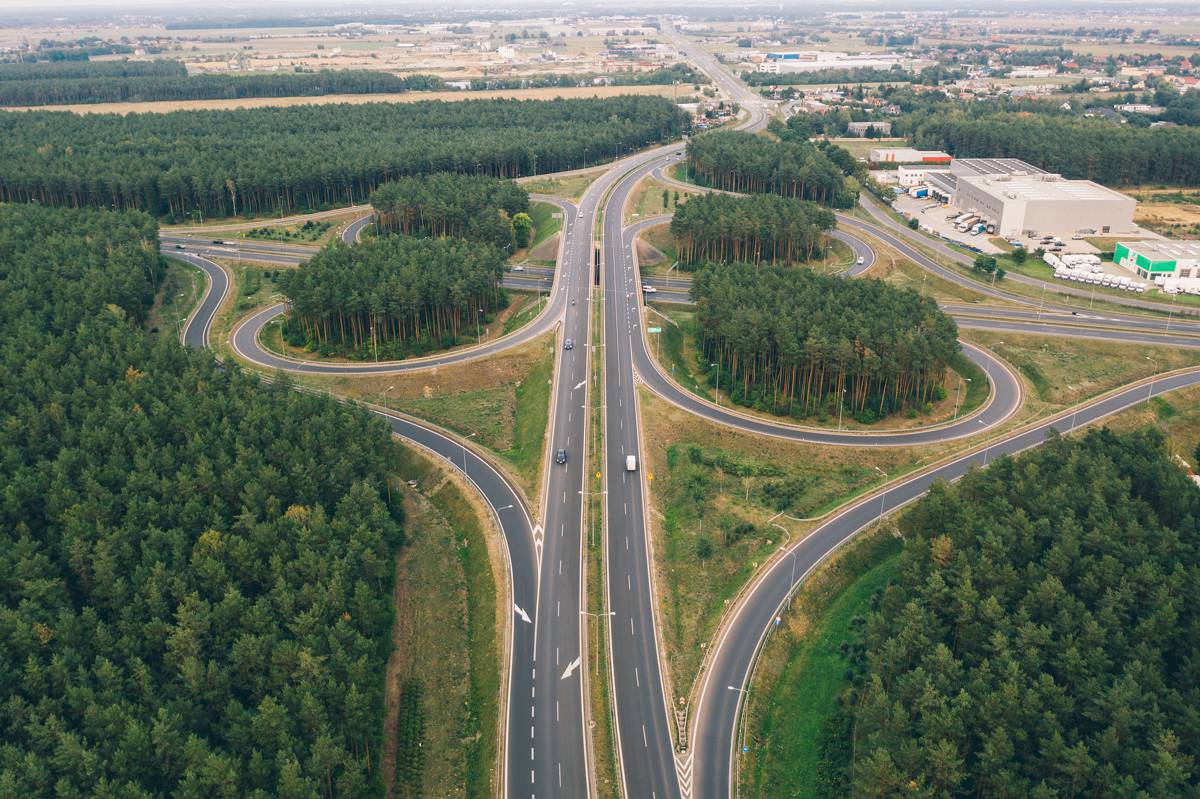
https://ecoroadsgroup.com
Controlled get to interstates in Poland are portions of the national street arranged and are separated into motorways and expressways. Both sorts of interstates have grade-separated trading with all other streets, crisis paths, carports, natural life assurance measures, and uncommon roadside diversion areas. Motorways contrast from expressways in terms of their specialized parameters, such as doled out speed, admissible ebb and flow of the street, path width. In expansion, expressways may have single carriageway areas. With the special case of single carriageway expressways, both sorts of thruways meet the definition of a thruway beneath the terms of the OECD, WRA, or the Vienna Convention. The speed restriction in Poland is 140 km/h on motorways and 120 km/h on double carriageway expressways. As of June 2021, there are 4,295 km (2,669 mi) of motorways and expressways in operation.
Bieszczady National Park

https://national-parks.org
The Bieszczady National Park is the third largest national park in Poland. It is located in the Subcarpathian Voivodeship, in the extreme southeast of the country, near the border with Ukraine and Slovakia.
The territory of the park is 292.02 km² and includes the highest mountain areas of the Polish part of the Bieszczady mountain range. The Bieszczady mountains are about 60 km long. The highest point of the park is Mount Tarnica, which is 1346 m above sea level. In 1992, the park and its surrounding areas became part of the Eastern Carpathians biosphere reserve with a total area of 2132.11 km²
Stunning wildlife and picturesque landscapes make this attraction an ideal place to relax. Bieszczady impresses with its beauty in the summer and autumn months, and in winter they are waiting with open arms for ski lovers.
The whole length of walking routes in the park is greater than one hundred fifty km, there are very few settlements in this area, so no one and nothing can interfere with nature communication. Do not forget that there is an excessive likelihood of encounters with wild animals, so it is better to go for a stroll at some stage in the day, when the actual proprietors of the wooded area most frequently rest. And at the same time, do not make too much noise to not disturb their peace. In addition to stunning forests and picturesque valleys, Bieszczady also provides water recreation. There are two stunning artificial lakes on the top of the mountains, which will be liked by fans of cruising and boat trips.
Location: 38-713 Ustrzyki Górne, Poland
Coordinates: 49°17′17″N, 22°29′49″E